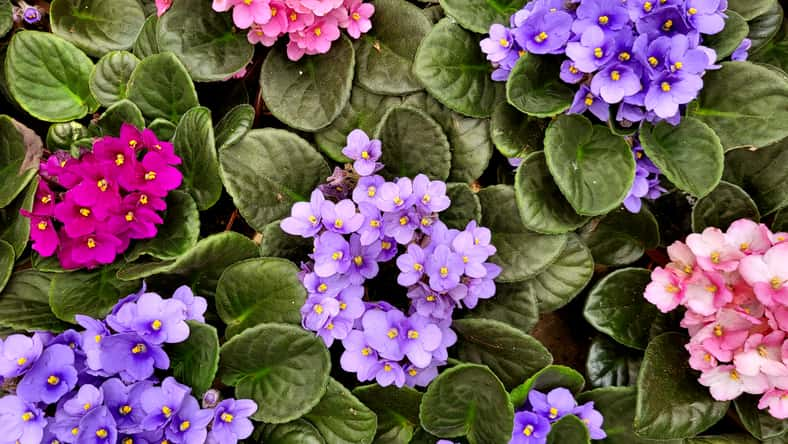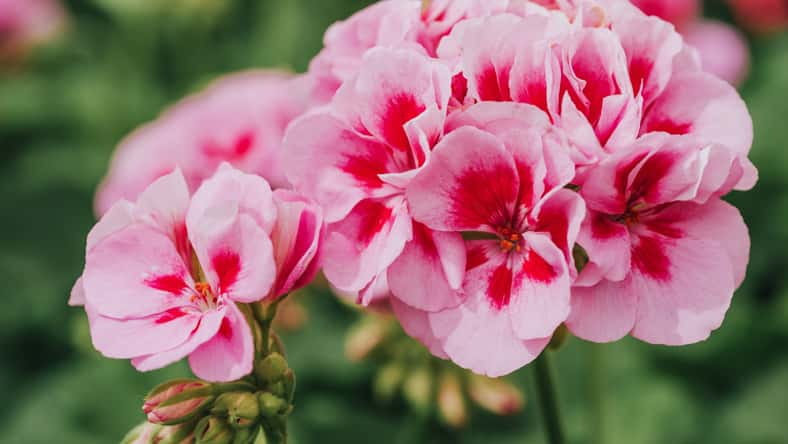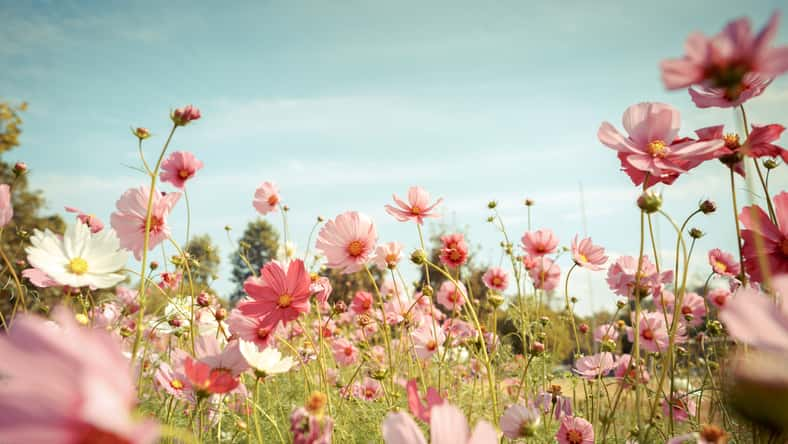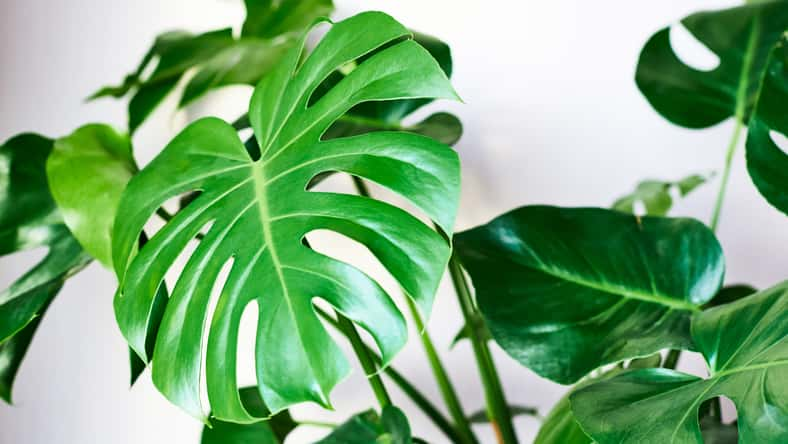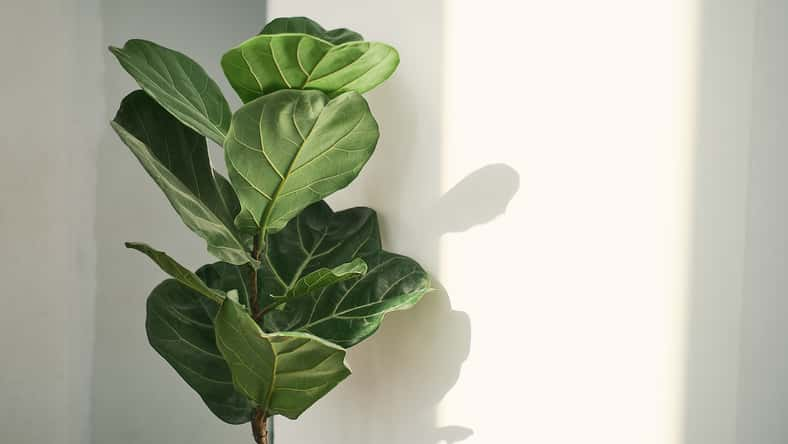
Is there a houseplant out there that’s trendier than the fiddle leaf fig? It’s Instagram’s top plant pick and the last word in home decor.
The fig tree is loved for its distinctive foliage and known for its large, lush, violin-shaped leaves. Fiddle leaf figs can grow up to ten feet tall outdoors. As a houseplant, it can get up to six feet.
If you are a beginner plant parent, the fiddle leaf fig may not be for you. It’s somewhat finicky, so you must get the growing conditions just right.
But once you’ve learned a few handy tricks, the care of the plant will become more than manageable. It’s a rewarding plant to tend to, and you’ll be proud to see its tall, sculptural appearance grace your home.
So if you feel ready to take on the challenge, here are some basic care instructions you need to know about growing a fiddle leaf fig.
Temperature & Humidity
Fiddle leaf figs are native to western Africa, where they grow in a lowland tropical rainforest, so they like warm and wet conditions. Therefore, keep your fig in an area between 60 and 85 degrees Fahrenheit.
Do not place your fig near heating or air-conditioning vents since these cause extreme temperature shifts that the fig is not fond of.
Humidity levels should be kept between 30 and 65 percent. If you need to create more humid conditions, mist the plant daily. It also wouldn’t hurt if your fig were in a room with a humidifier.
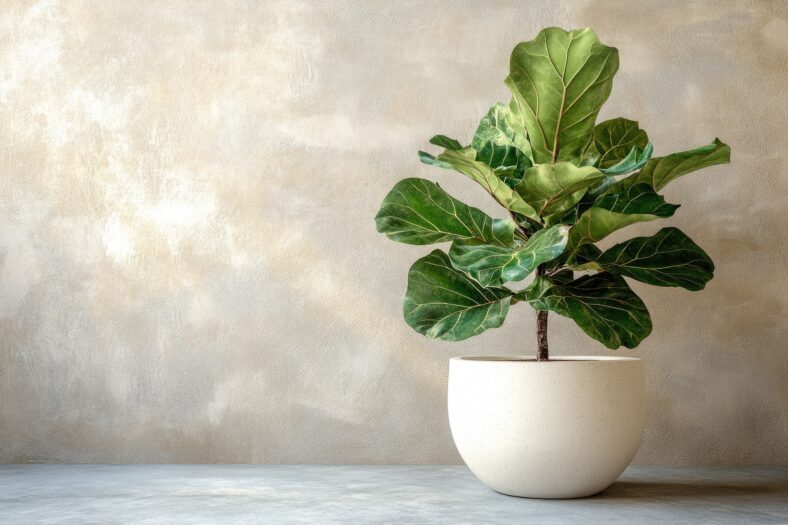
Sign up for Chip Chick’s newsletter and get stories like this delivered to your inbox.
Sunlight
This tree-like houseplant requires the perfect amount of sunlight. Too much sunlight can burn the leaves, and too little will result in slow growth. It may take a lot of trial and error to find the best place for it in your home.
Be prepared to move your plant’s location frequently, if not daily. Each part of the plant needs to be rotated to face the light so that it grows evenly.
Also, try to wipe the dust off the leaves with a damp cloth weekly. It makes the leaves glossier and allows them to absorb sunlight more effectively.
Water & Soil
When the fiddle leaf fig doesn’t get enough water, its leaves will wilt and suffer from discoloration. Too much, and its leaves might fall off. Plus, there’s the possibility of root rot, which is hard to come back from. It needs to be watered often during the warmer months, but you can water it less in winter.
An indoor potting soil that’s well-drained is best for the fig. At least once a month, soak the soil thoroughly until excess water drains out of the pot. It helps to prevent salt build-up.
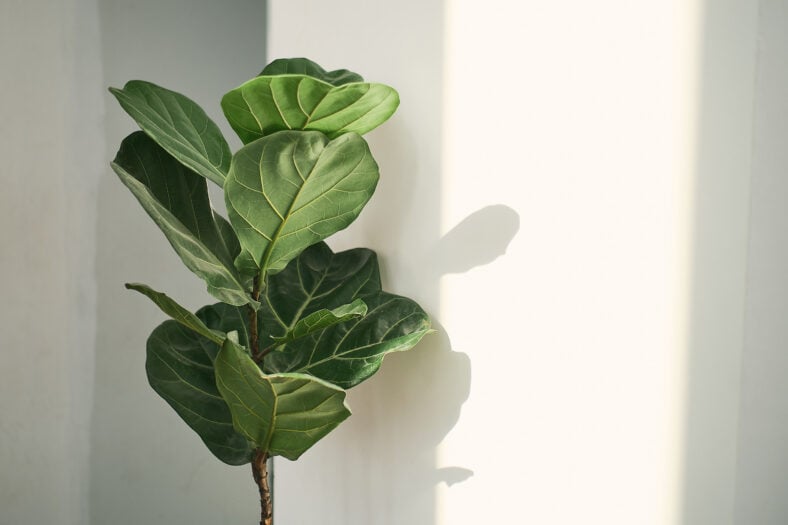
Precautions
One of the most important things to note about this plant is that it isn’t safe for pets. They are toxic to cats and dogs, as well as humans, if ingested. So keep it out of reach of small children and animals.
Lastly, a fig tree will communicate to you if something’s wrong. Its leaves are the best indicator that there is a problem. So watch for spotting, yellowing, bleaching, or falling leaves.


